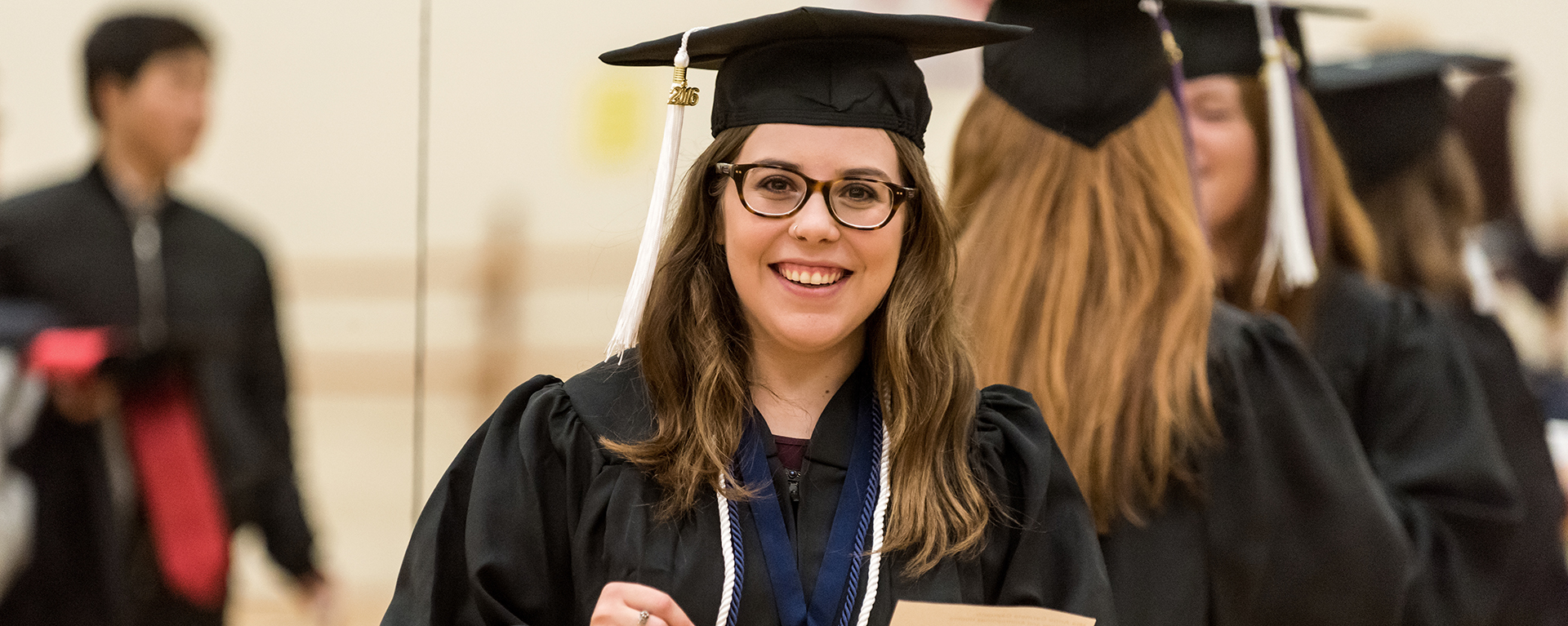FAFSA now available!
The 2024-2025 FAFSA is now available. Fill it out as soon as you can to receive as much aid as possible.
Subsidized and unsubsidized loans are low-interest student loans
The Federal Direct Subsidized Loan and Federal Direct Unsubsidized Loan are two types of low-interest student loans offered under the U.S. Department of Education's Federal Direct Loan program. The U.S. Department of Education is the lender for both of these loans.

Federal Direct Subsidized Loan
- Federal student loan
- Need-based
- Requires repayment after you graduate or drop below half-time* enrollment
- No interest accrues on this loan while you are enrolled at least half-time*
- Undergraduate students only
- Must be a U.S. Citizen or eligible non-citizen
- Must be enrolled half-time*
- Must be degree-seeking
- Must have financial need, as determined by FAFSA
- Cannot be in default on any federal student aid

Federal Direct Unsubsidized Loan
What is an Unsubsidized Loan?
- Federal student loan
- Non-need based
- Requires repayment after you graduate or drop below half-time* enrollment
- Interest accrues on this loan from the date the funds are disbursed to the school
- Interest can be paid as it accrues but is not required while enrolled at least half-time*
- If interest payments are not made, interest will capitalize and add to the amount borrowed
Who qualifies?
- Undergraduate, graduate, and law students
- Must be a U.S. Citizen or eligible non-citizen
- Must be enrolled half-time*
- Must be degree-seeking
- Cannot be in default on any federal student aid
*Half-time enrollment is defined as:
- Six credit hours for undergraduate students
- Five credit hours in the fall and spring semesters for graduate and law students
- Three credit hours in the summer semester for graduate and law students
Complete the Free Application for Federal Student Aid (FAFSA) each academic year.
Once your FAFSA is received, Washburn University will determine your Subsidized and Unsubsidized Loan eligibility based on your financial need and other available aid.
The maximum Subsidized and Unsubsidized Loans amounts a student can receive each year is set by the federal government. The amounts listed below are for one academic year. The total loan amount is split between the fall and spring semesters. For example, a dependent Freshman/1st Year student could receive $2,750 in the fall semester and $2,750 in the spring semester in federal student loans.
The federal government also sets a cap on the amount of Subsidized and Unsubsidized Loans a student can borrow over the lifetime of their college career. These limits are referred to as aggregate limits.
Understand the difference between dependent and independent students.
Dependent Undergraduate Students
(Whose parents have not been denied a Parent PLUS Loan)
| Year | Maximum Subsidized | Additional Unsubsidized | Total Loan Amounts |
| Freshman/1st Year (including 1 year certificate programs) | $3,500 | $2,000 | $5,500 |
| Sophomore/2nd Year (including 2 year certificate programs and Associate's Degrees) | $4,500 | $2,000 | $6,500 |
| Junior/3rd Year & Senior/4th Year | $5,500 | $2,000 | $7,500 |
| Aggregate Limits | $23,000 | $8,000 | $31,000 |
Independent Undergraduate Students
| Year | Maximum Subsidized | Additional Unsubsidized | Total Loan Amounts |
| Freshman/1st Year (including 1 year certificate programs) | $3,500 | $6,000 | $9,500 |
| Sophomore/2nd Year (including 2 year certificate programs and Associate's Degrees) | $4,500 | $6,000 | $10,500 |
| Junior/3rd Year & Senior/4th Year | $5,500 | $7,000 | $12,500 |
| Aggregate Limits | $23,000 | $34,500 | $57,500 |
Graduate/Law Students
(Aggregate limit includes loans borrowed as an undergraduate student)
| Year | Total Loan Amounts |
| Each Year | $20,500 (Unsubsidized Only) |
| Aggregate Limits | $138,500 |
First-Time Borrower Loan Requirements
If you choose to accept a Subsidized and/or Unsubsidized Loan, you must complete two online loan requirements before you can receive these funds.
These loan requirements are meant to help you understand the terms and conditions of borrowing federal student loans.
The MPN is valid for up to 10 years from the date of the student's first loan disbursement.
Loan Disbursement
Disbursement is the process of financial aid applying toward your bill at Washburn University.
- All loans must be disbursed in two equal installments - typically one disbursement in fall semester and one in spring, unless attending only one semester or summer
- If you are a first-year student and first-time loan borrower, your first loan disbursement will occur 30 days after the start of the semester
- For all other students, loans will disburse approximately 10 days before the start of classes
Financial Aid Refunds
- If your accepted financial aid awards exceed your bill at Washburn University, a refund will be issued to you
- Refunds may be issued via direct deposit into your bank account or by paper check
- Find out more about financial aid refunds
Federal Direct Loans accepted by the student will be submitted to the National Student Loan Database System (NSLDS). All students have access to review their full loan history through NSLDS. Additionally, this information is made accessible to guaranty agencies, lenders and institutions that are deemed to be authorized users.
Current interest rates for Direct Subsidized and Unsubsidized Loans are reflected below. These interest rates are fixed rates, meaning the interest rate will not change over the life of the loan.
| Loan Type | Borrower Type | Loans first disbursed on or after 7/1/23 and before 7/1/24 |
| Direct Subsidized & Unsubsidized Loans | Undergraduate | 5.50% |
| Direct Unsubsidized Loans | Graduate | 7.05% |
In addition to federal loan limits, the length of time a student may borrow Subsidized Loans is limited by the federal government.
The Subsidized usage limit is based on 150 percent of the published length of your degree.
For example, if you are enrolled in a four-year bachelor's degree program, you are limited to six years of eligibility in the Subsidized Loan.
4 year degree x 150 percent limit = 6 year maximum
Since the maximum eligibility period is based on the length of your degree, the maximum eligibility period can change if you switch to a program with a different length.
If you receive a Subsidized Loan for one program and then change to another program, loans already received count toward the new maximum eligibility period.
Under the Subsidized usage limit regulations, you become responsible for paying the interest on the Federal Direct Stafford Loans when:
- You are no longer eligible for Subsidized Loans and are still enrolled in the current program
- You are no longer eligible for Subsidized Loans, have not graduated from your original program and are enrolled in a new undergraduate program that is the same length or shorter than your original program
- You transferred to a shorter program and lost eligibility for Subsidized Loans because you have received Subsidized Loans for a period that equals or exceeds your new, lower maximum eligibility period
Loan repayment for Subsidized and Unsubsidized Stafford Loans begins six months after you have graduated or drop below half-time enrollment.
Sample Loan Repayment Schedule
The six-month grace period can only be used one time. If you enter loan repayment and later return to school, once you graduate or drop below half-time enrollment, you will immediately go back into repayment.
Similarly, if you withdraw, use four months of your grace period and later return to school, once you graduate or drop below half-time enrollment, you will only have two months of a grace period remaining.
The summer semester does not count against your grace period, unless:
- You enroll for summer and withdraw or drop below half-time during the semester, or
- You are enrolled half-time for spring, do not attend summer and do not enroll half-time in the fall semester
If you borrow student loans, once you graduate or drop below half-time enrollment, you must complete online Loan Exit Counseling. Exit Counseling is meant to help you understand the next steps for student loan repayment.
After completing Exit Counseling, you will work with your loan servicer to select your payment plan and schedule payments. It is important to know all your options. Failure to make payments on student loans can result in loan default, which can cause serious financial and legal issues, such as the following.
Avoid Loan Default
- Immediate repayment due
- Collection fees
- Wage garnishment
- Negative impact on credit score
- Loss of future federal financial aid eligibility
Visit the Federal Student Aid Repayment Plan website for information regarding student loan payment plans and estimated repayment schedules.
To maintain eligibility for the Federal Direct Subsidized and Unsubsidized Loans, you must:
- Submit a FAFSA
- Enroll at least half-time
- Enroll in a degree-bound program
- Be a U.S. Citizen or eligible non-citizen
- Be making Satisfactory Academic Progress
- Not be in default on any federal student aid
- Have not reached aggregate loan limits
GET IN TOUCH WITH Financial Aid
Financial Aid Office
1700 SW College Ave.
Topeka, KS 66621
Phone & Email
Ph: 785-670-1151
Fax: 785-670-1079
financialaid@washburn.edu

